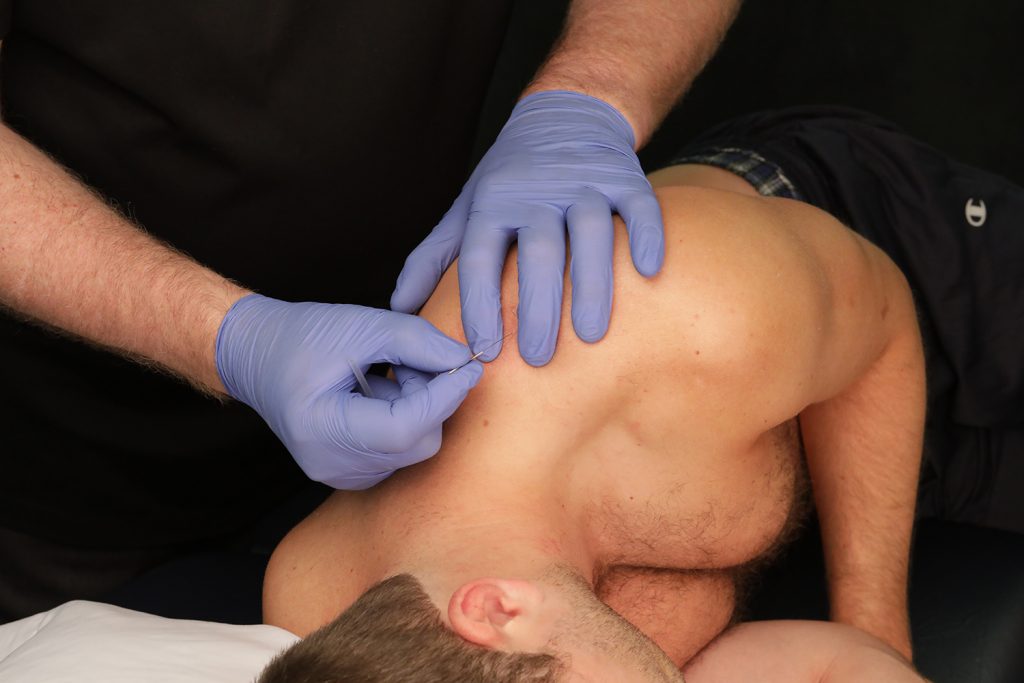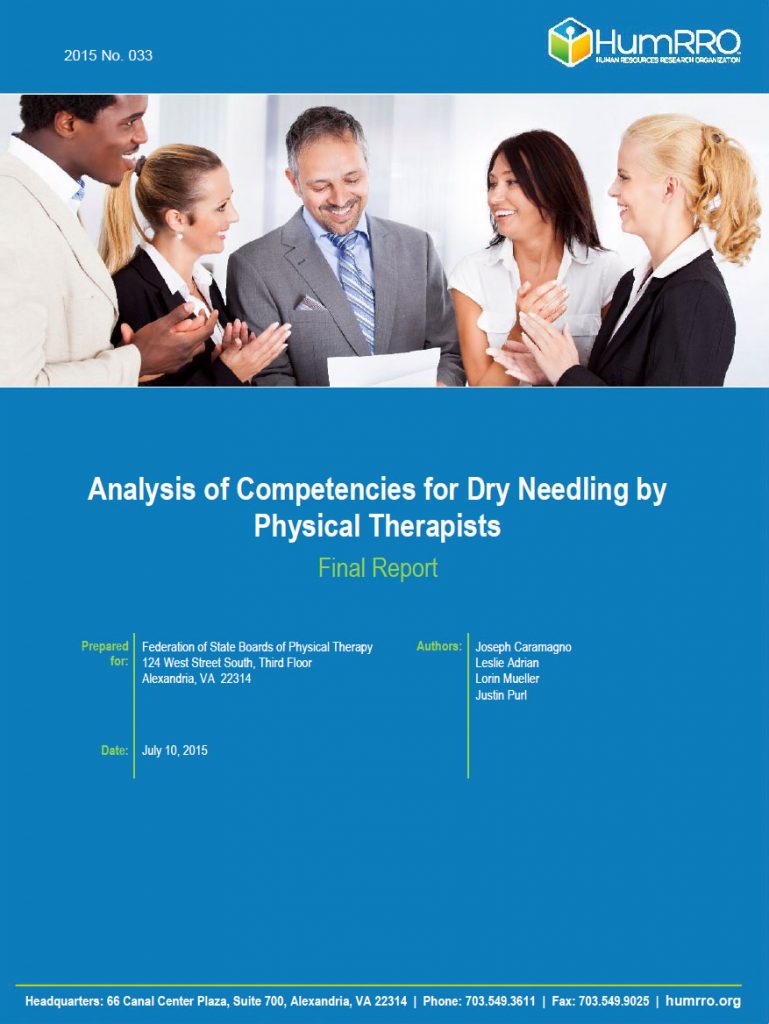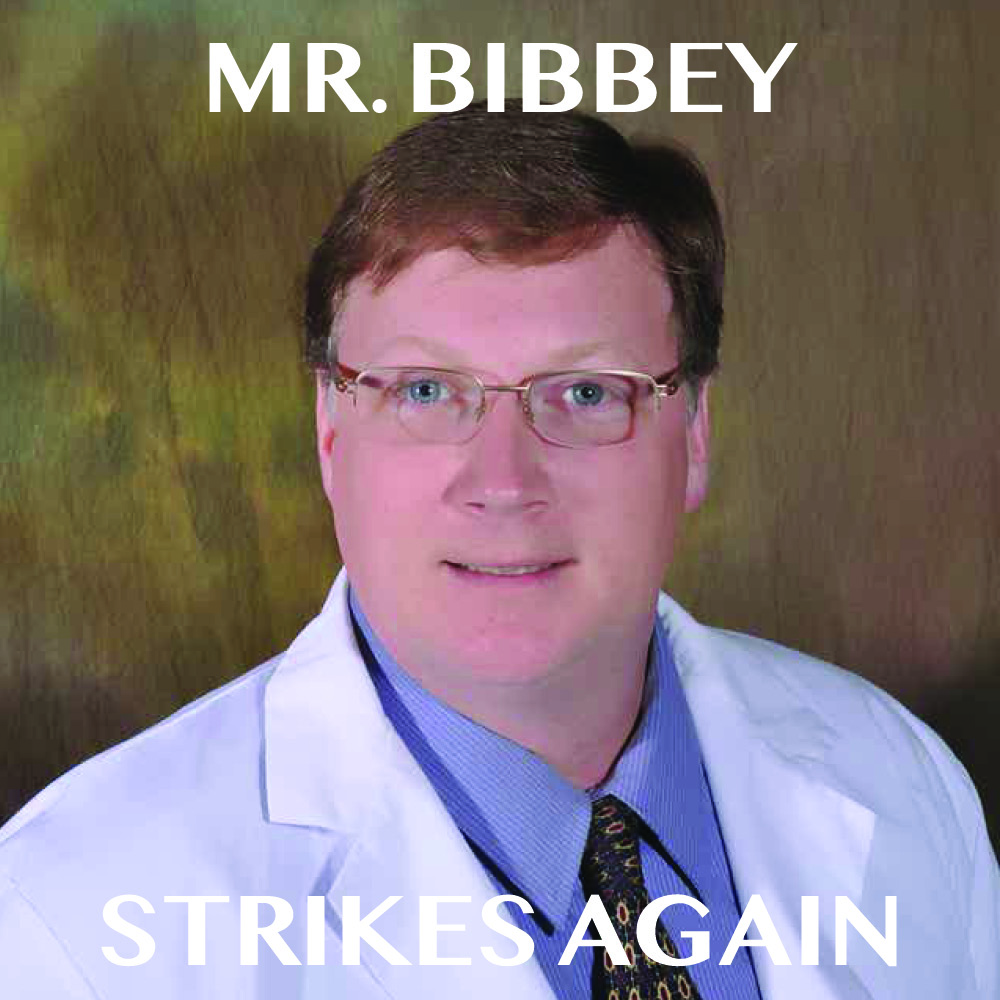The main objective of State Boards of Physical Therapy is to protect the public and it is fair to assume that members of state boards do believe that the regulations they develop indeed meet the requirement of protecting the public. Yet, it appears that dry needling regulations in some states may actually increase the risk to the public! For example, in Maryland physical therapists must complete 80 hours of dry needling continuing education consisting of 40 practical and 40 theoretical hours before they can submit an application to be approved by the board to use dry needling in their practice. Some physical therapists can afford to attend only one continuing education course per year, which means that after attending, for example, the Myopain Seminars Dry Needling 1 course (DN-1), it may take two full years before that therapist has an opportunity to attend the DN-3 course. In that scenario, the physical therapist would not have any practical experience with dry needling for at least two years! What are the chances that this therapist remembers much of a course he or she attended two years ago? Would this therapist still recall the specific safety precautions for some of the more riskier muscles? Would this therapist remember how to avoid causing a potential pneumothorax or subdural hematoma? Does this regulation really protect the public as well as possible?
 In other jurisdictions, a therapist can use dry needling immediately after attending one dry needling course as long as they limit dry needling to muscles that were included in the course. There is no evidence that physical therapists who use dry needling after attending one course would pose any increased risk to the public. So why would a state board require a minimum number of hours before physical therapists can use what they have learned? Does a particular board have similar rules for any other courses, such as spinal manipulation courses or wound debridement courses? Does dry needling pose such an increased risk that extra precautions are indicated to protect the public? If dry needling would be that risky, why it is that practically every professional sports team in the USA has employed physical therapists who are trained in dry needling?
In other jurisdictions, a therapist can use dry needling immediately after attending one dry needling course as long as they limit dry needling to muscles that were included in the course. There is no evidence that physical therapists who use dry needling after attending one course would pose any increased risk to the public. So why would a state board require a minimum number of hours before physical therapists can use what they have learned? Does a particular board have similar rules for any other courses, such as spinal manipulation courses or wound debridement courses? Does dry needling pose such an increased risk that extra precautions are indicated to protect the public? If dry needling would be that risky, why it is that practically every professional sports team in the USA has employed physical therapists who are trained in dry needling?
A prospective study by Brady et al. demonstrated that the risk of a significant adverse event of dry needling by physiotherapists was less than 0.04% in 7,629 treatment sessions and none of the participants in that study had completed 80 hours of dry needling education before they started using dry needling in their clinic. The participants in the study had completed 63 hours of dry needling education. Besides, does requiring 80 hours of training really protect the public? Another similar study by Boyce et al. of 20,464 treatment sessions showed similar results.
There are no studies to support any minimum number of hours. There are literally tens of thousands of physical therapists in the United States and even more abroad who did not complete 80 hours of dry needling education before they started using dry needling in their practices, including several individuals who currently serve on state boards of physical therapy! Many states require between 46 and 54 hours of specific dry needling education, but even that range is completely arbitrary and without any evidence-informed basis, other than the empirical finding that the number of significant adverse events has been very low. In contrast, the regulations signed into law in the Commonwealth of Virginia do not stipulate any minimum number of hours. It does not appear that the number of significant adverse events is higher in Virginia than in any other state! What about the state of North Carolina? The NC Supreme Court ruled that DN is within the scope of physical therapy without requiring a minimum number of hours of DN education!
Another issue with requiring a minimum number of hours is that an increasing number of physical therapists complete only the minimum number of hours required by their physical therapy state board, where in the past, nearly every student would attend all courses and sit for the practical and theoretical examinations. Is getting certified not a better guarantee that the public will be more protected? State boards do not require that course providers must administer theoretical and practical examinations, which has led to the strange scenario that some course providers certify physical therapists in dry needling based on course attendance only. In this case, a therapist may not pay any attention during a course and yet, after 2-3 courses become certified in dry needling!
Covering a five-year period ending in 2017, CNA, the underwriting company of the Healthcare Providers Service Organization (HPSO), reported 34 claims in 19 states “arising from the practice of dry needling….” HPSO is the physical therapy malpractice company endorsed by the American Physical Therapy Association. It is a fair estimate that there are at least 30,000 physical therapists in the United States educated in dry needling. Let’s assume that those therapists use dry needling with only 5 patients per day for a total of 25 dry needling treatments per week per therapist. In a single week, 750,000 patient visits would feature dry needling. Next, let’s assume that these therapists work only 40 weeks per year. In one year, the number of patient visits with dry needling would be over 30 million. it certainly looks like dry needling by physical therapists is a safe procedure!
In sharp contrast, Washington State is considering demanding the most rigorous dry needling continuing education requirement in the country at 300 hours, consisting of 75 hours of direct needle instruction, 75 hours of related content instruction, and 150 hours of supervision. In comparison, the US military requires 25 sessions of supervision. The Integrated Structural Acupuncture program for physicians offered by Harvard University consists of 303.5 hours of total education. Graduates of this program will be able to practice the entire scope of acupuncture practice. Approximately 20% of the curriculum falls within the scope of practice of physical therapists. Yet, physical therapists in Washington State would only be allowed to use dry needling in their practice after spending the same number of hours in post-graduate education!
 According to an independent Analysis of Competencies for Dry Needling by Physical Therapists commissioned by the Federation of State Boards of Physical Therapy (FSBPT), only “16 (14%) of the knowledge requirements related to competency in dry needling must be acquired through post-graduate education or specialized training in dry needling.” To suggest that physical therapists in Washington State would need 300 hours of dry needling training to learn 14% of the knowledge requirements seems a bit insulting.
According to an independent Analysis of Competencies for Dry Needling by Physical Therapists commissioned by the Federation of State Boards of Physical Therapy (FSBPT), only “16 (14%) of the knowledge requirements related to competency in dry needling must be acquired through post-graduate education or specialized training in dry needling.” To suggest that physical therapists in Washington State would need 300 hours of dry needling training to learn 14% of the knowledge requirements seems a bit insulting.
The requirement that physical therapists must complete a certain number of supervision hours seems reasonable especially within the context of the military. However, when the state of Utah amended its physical therapy statutes in April 2014 to include dry needling in the scope of PT practice, the 250 hours of required supervision created a lot of confusion. Since dry needling was just approved, who would be considered qualified to offer meaningful supervision in the state?
Another questionable regulation in Maryland is that the 40 hours of theoretical education “must be done either “in person at a face-to-face session; or in real-time through electronic means that allow for simultaneous interaction between the instructor and the participants.” It is hard to understand why the Board of Maryland Board of Physical Therapy Examiners requires that dry needling theoretical education has to be live when you can complete an entire transitional Doctor of Physical Therapy online! To assist PTs licensed in Maryland to meet this “live” requirement, Myopain Seminars offers monthly live webinars at the recommendation of the PT Board, but do these webinars really guarantee that students are actively engaged in the live online educational activity? How does the board’s requirement of live theoretical education protect the public? Is there any guarantee that once students log onto a live webinar, they actually attend the webinar? What would stop a PT from logging in and next, mow the lawn, read a book, relax at the beach, go skiing, etc.” How does that protect the public? Is this situation any different than when pharmaceutical companies used to offer “educational activities” in a nice Caribbean resort where the only requirement for a physician was to sign in on a sheet in an otherwise empty room with a tv and a video?
Once Myopain Seminars provided all theoretical lectures to the students, the passing rate for the theoretical examinations increased from 76% to 98%! How much more protection would be required to make sure the citizens of Maryland would be safe when treated with dry needling by a Maryland-licensed PT?
 Several US state boards require that a PT needs to be licensed for at least two years before they can use dry needling in clinical practice. Is there any evidence that a new physical therapy graduate, who just passed the national board examinations, would pose a greater risk to the public than PTs who have been practicing for 15 years and probably never looked at an anatomy book since they graduated? Dry needling is anatomy-driven and one could easily make the argument that a new graduate likely has a greater mastery of anatomy than a seasoned clinician who does not recall any pertinent details. In March of 2019, the State of Colorado updated its dry needling regulations and dropped the two-year waitlist, and allowed partial online education.
Several US state boards require that a PT needs to be licensed for at least two years before they can use dry needling in clinical practice. Is there any evidence that a new physical therapy graduate, who just passed the national board examinations, would pose a greater risk to the public than PTs who have been practicing for 15 years and probably never looked at an anatomy book since they graduated? Dry needling is anatomy-driven and one could easily make the argument that a new graduate likely has a greater mastery of anatomy than a seasoned clinician who does not recall any pertinent details. In March of 2019, the State of Colorado updated its dry needling regulations and dropped the two-year waitlist, and allowed partial online education.
Protecting the public is important. All medical-oriented state boards share this objective whether it is a nursing board, a medical board, a chiropractic board, or a physical therapy board. Some dry needling regulations do not appear to necessarily add any additional protection, however, it is clear they can make it harder for physical therapists to get qualified to use dry needling in their clinics. Some regulations may actually increase the risk for the public. Something to think about…


